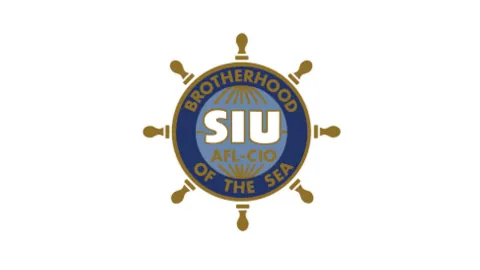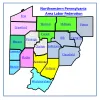Get to Know AFL-CIO's Affiliates: Seafarers

Name of Union: Seafarers International Union
Mission: To represent the best-trained, most efficient crews in the world as a dynamic, politically active organization dedicated to protecting the membership’s job security in the face of the ever-changing needs of the industry.
Current Leadership of Union: David W. Heindel has served as the president of the Seafarers International Union since February 2023. Prior to that, he served as the secretary-treasurer of the SIU Atlantic, Gulf, Lakes and Inland Waters starting in February 1997. Augustin “Augie” Tellez has been the executive vice president of SIU since 2005. Tom Orzechowski is the secretary-treasurer of the SIU.
SIU also has 8 vice presidents: George Tricker (Contracts), Dean Corgey (Gulf Coast), Nicholas J. Marrone (West Coast), Joseph T. Soresi (Atlantic Coast), Bryan Powell (Lakes and Inland Waters), Joe Vincenzo (Government Services Division), Hazel Galbiso and Pat Vandegrift.
Number of Members: 80,000
Members Work As:Professional merchant mariners sailing aboard U.S.-flag vessels in the deep sea, Great Lakes and inland trades.
Industries Represented: Members work on a wide variety of vessels, including commercial container ships and tankers, military support ships, tugboats and barges, passenger ships, gaming vessels and many more.
History: Before the Seafarers International Union was formed in 1938, there were several other unions that organized maritime workers, including the International Seamen's Union (ISU), which formed in 1892 and was chartered by the American Federation of Labor. Pressures from the Great Depression and internal division led to the downfall of the ISU, despite some successes, including securing the passage of the Jones Act in 1915.
The SIU was formally given a charter in 1938 with nearly 7,000 members. World War II had a major impact on the maritime trades. SIU members were a huge part of the war effort, providing military support to the Allies and serving as the underpinning of the Allied supply lines. The casualty rate for merchant seamen was higher than any other branch of the armed services. The union managed to secure hazard pay for those sailing into war zones. After the war, the SIU made tremendous gains with organizing drives, a general maritime strike and the creation of AFL's Maritime Trades Department.
Paul Hall was a charter member of the SIU and, by the late 1940s, he was in charge of daily operations of the union, and he took the union in a more militant direction. Hall stressed civic engagement and negotiation and took SIU to the streets in solidarity with other AFL unions. Reform and expansion were key among Hall's achievements, including securing the first hospital and death benefits for members, creating the Seafarers Vacation Plan and strengthening seniority provisions in hiring.
In the 1950s, the SIU continued to expand by merging with other smaller maritime unions. The union also opened up several training facilities to help Seafarers hone their professional skills. The union was successful in the 1960s in calls to modernize the U.S.-flag-bearing fleet. The 1970s would see the union successfully fight for the passage of the Merchant Marine Act, which gave a boost to the maritime industry, including boosting jobs.
The rapid changes in technology, trade and world politics in the 1980s and 1990s provided both opportunities and challenges for the SIU. The expansion of global trade and the growth in military conflict around the globe directly affected SIU's membership. SIU members were among the first responders after the terrorist attacks of 9/11, transporting evacuees from affected areas and served as crew on the USNS Comfort, a ship that served as a center for medical care for first responders and survivors. SIU members also would be key in stories in more recent years, such as the “Miracle on the Hudson” aircraft incident in 2009 and when the Maersk Alabama ship was hijacked by Somali pirates.
Whether it be in times of war, times of peace or in reaction to a tragedy, Seafarers are part of the solution; and they continue to do what they always do: "turning to and delivering the goods."
Current Campaigns/Community Efforts:The Seafarers provide training and apprenticeships through the Paul Hall Center for Maritime Training and Education and the Harry Lundeberg School of Seamanship. The Seafarers Disaster Relief Fund helps members and retirees who are hurt by hurricanes and other disasters. The Seafarers also assist members with pensions and share news and information through The Federal Mariner and the Mobile News Network.
